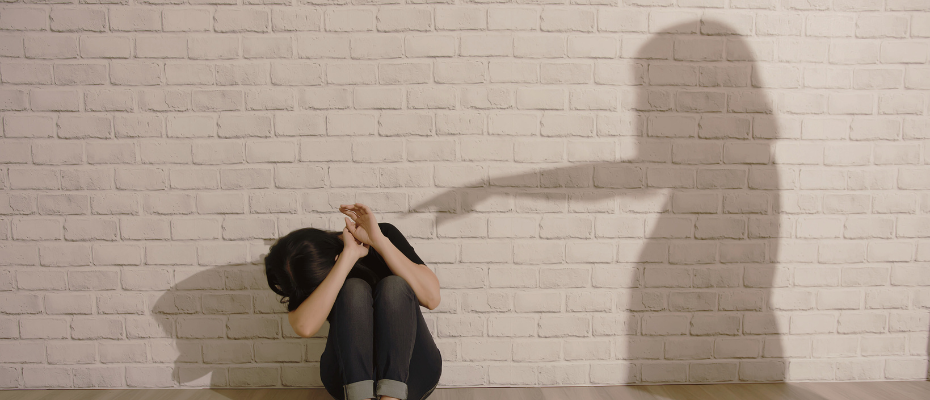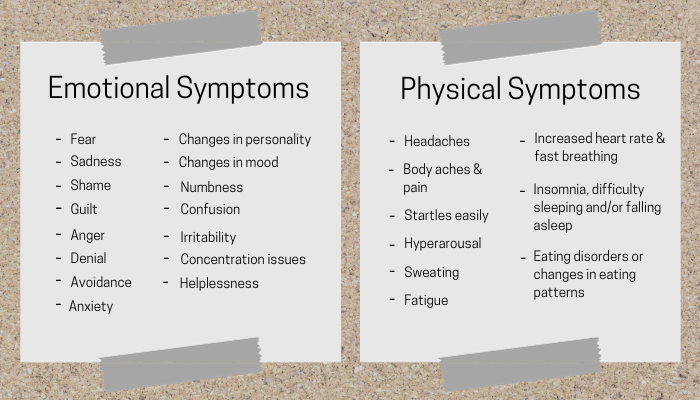Trauma-Informed Teaching Strategies

You are reading this article likely because you are aware that the students walking through our classroom doors have many challenges that they are unable to leave behind. Instead, they are carrying these burdens in their “invisible backpacks.” In light of the recent COVID-19 pandemic, these challenges have increased and manifested as students were isolated and families were faced with difficult decisions surrounding how to provide academic support at home while trying to work themselves, as well as how to meet even the most basic needs for survival.
The research surrounding trauma and children is profound. A significant number of research studies have found that students who have experienced traumatic events have a greater likelihood of struggling with memory, concentration, interpersonal skills, and more. This can manifest in academic issues including, but not limited to, poor classroom behaviors and academic performance. So, what exactly is trauma? Trauma is the emotional reaction to an event, series of events, or circumstances that an individual perceives as physically or emotionally damaging or threatening. It can negatively affect the individual's physical, social, and emotional well-being (Missouri's Early Care and Education Connections, n.d.). Responses to trauma may differ from student to student. Trauma can be physical, mental, emotional, or a combination of both. The following are three specific types of traumas.
- Acute Trauma. Acute trauma results from a single traumatic event and can lead to long-lasting negative effects, including PTSD. Examples include school shootings, life-threatening diagnoses, and sudden grief after losing a loved one.
- Chronic Trauma. Chronic trauma is best understood as repeated trauma. Chronic trauma occurs because of recurrent, ongoing adverse events. Some examples of acute trauma include being a victim of bullying or witnessing ongoing domestic violence at home.
- Complex Trauma. Like chronic trauma, complex trauma is trauma that occurs because of repeated events. The difference between chronic and complex trauma is that complex trauma results from unwanted and intrusive personal interactions (Neuropedia, 2021). Events that result in complex trauma often occur during a victim’s early life and are prolonged and severe. Commonly, complex trauma is the outcome of events that occur between a caregiver and a child. Child abuse or profound neglect are both examples of complex trauma.
Whenever the mind, emotions, or body senses danger or a threat, it triggers a response known as the "flight or fight" response. Even if the harm has already taken place in the past, the body will still react to any perceived threat based on its memory of the prior harm. Below are some potential responses to trauma.

Students understandably have trouble learning in the classroom if they do not feel mentally, emotionally, and/or physically safe. By using trauma-informed teaching and learning practices, we are being proactive and responding to the needs of our students. This involves making small changes in the classroom that foster a sense of safety and greatly improve a student's ability to learn.
Trauma-Informed Teaching Strategies
Establishing a secure classroom where students feel safe necessitates the cultivation of stability, reliability, and conflict resolution strategies. Teachers can accomplish this goal by cultivating consistency and predictability in the classroom. Additionally, de-escalation techniques can be employed to manage conflicts and maintain a peaceful learning atmosphere. Use the strategies shared below to provide a classroom environment where students suffering from trauma feel secure.
Consistency
Consistency in the classroom is important. Establish consistent practices and routines to benefit students. Here are some areas where small changes can help.
- Start the classroom day off the same way. This includes how students enter the classroom, how they greet the teacher, where they sit, and the daily warm-up activities.
- The process for completing work. Have a place and method students consistently use to turn in assignments. Also, have a system in place for how students receive the work should they be absent from class. Think about the desired process for submitting late work or how to get help with material that is not understood.
- Create a method for students to check in and out of class. What do students need to do if they have to use the restroom? Any time there is a need for someone to leave the classroom, establish a process in which students clearly know the procedure for how to sign in and sign out.
- Materials in class. Create a plan for how students utilize materials in class. This may include how digital devices are checked both in and out. Disseminate small whiteboards and markers. Where should students go to sharpen their pencils? And when? Perhaps the teacher may want to reiterate the importance of always having a free reading book available in case students finish their work early.
Incorporating consistency and routines into the educational day helps students suffering from trauma feel more secure.
Predictability
Predictable routines and uniformity in the classroom help students anticipate what comes next and encourage them to respond positively. According to Hanover Research's 2019 report, teachers can achieve stability by maintaining daily routines, showing reliable warmth, setting clear expectations, and providing predictability. Strategies to increase predictability in the classroom include the following.
- A specific method for classroom transitions.
- Visually posting an agenda for the day.
- Clapping to prompt class-wide attention.
- Setting timers for completing assignments.
- Counting backward as a signal for students to return to their desks.
- Establishing specific partnering procedures when students partner for class discussions and/or collaborative work sessions.
Brainstorm additional ways to support predictability in the classroom. Consider your population and their needs for inspiration. Take a moment to review ASCD's article on trauma-informed teaching strategies to discover eight small changes you can make in classroom interactions that will make a big difference for traumatized students.
De-escalation
Once students enter the classroom, they may react strongly to prior events that occurred, either before coming to class or even during the class period. Having de-escalation strategies already in place helps support students who exhibit challenging behaviors due to being triggered. El Cerrito High School and School Health Centers offers teachers a process to follow when they notice a student in distress (Hanover Research, 2019).
- Notice signs of distress.
- Connect with the student.
- Redirect behavior by providing choices and options.
- Once calmer, discuss what happened (and consequences if needed).
Consider this scenario. Alex shouts at another student with profanity, demanding they be quiet from across the classroom. You calmly direct Alex to step outside for a break. Then, you redirect the rest of the classroom and give them an independent activity. You invite Alex to talk outside the classroom, not visible to the class. After hearing Alex's perspective, you work together to develop strategies for how he could have managed his emotions and frustrations more effectively. Alex rejoins the class once you both clearly understand how the rest of the class period will proceed.
When working with a student, arguing about what has or has not occurred is never helpful. If a situation escalates, additional support may be necessary. It is important to remain calm and prioritize the safety of all students. Having a partner teacher nearby or another staff member who can redirect or move students away from a potentially harmful situation is also beneficial.
Teaching and learning can be challenging, even under the most favorable conditions. It becomes even more challenging when trauma is involved. As educators, we can adopt small practices that yield big rewards in creating a stable environment for students to share their experiences because they feel safe. With that safety, obstacles to their learning are removed, and students have the greatest chance of being productive in the classroom.
To learn more about trauma-informed teaching strategies, visit the Professional Development Institute (PDI) website or visit our Trauma-Informed Teaching Strategies for All Learners (Grades PreK-6) course. Our courses are designed to offer practical strategies that can be implemented in classrooms immediately while focusing on the most relevant topics in education. All our courses are instructor-led and conducted entirely online at the graduate level. University credit is also available through the University of California Division of Extended Studies. We offer an extensive catalog of online courses that cover the most critical topics in today's classrooms and are affordable for teachers.
Categories: teaching strategies, SEL
References
Aguilar, E. (2021). “The Resilient Educator/What Does a Resilient Educator Do?” Retrieved 25 Sept. 2023 from https://www.ascd.org/el/articles/the-resilient-educator-what-does-a-resilient-educator-do
Committee for Children. (2021). “What is Social-Emotional Learning?” Retrieved 25 Sept. 2023 from https://www.cfchildren.org/what-is-social-emotional-learning/
Hanover Research. (2019). “Best Practices for Trauma-Informed Instruction.” Retrieved 25 Sept. 2023 from https://wasa-oly.org/WASA/images/WASA/6.0%20Resources/Hanover/BEST%20PRACTICES%20FOR%20TRAUMA-INFORMED%20INSTRUCTION%20.pdf
Minahan, J. (2019). “Trauma-Informed Teaching Strategies.”ASCD. Retrieved 25 Sept. 2023 from https://www.ascd.org/el/articles/trauma-informed-teaching-strategies
Missouri’s Early Care and Education Connections. (n.d.). “Trauma-Informed Care.” Retrieved 25 Sept. 2023 from https://earlyconnections.mo.gov/professionals/trauma-informed-care
Neuropedia. (2021). “The 3 Types Of Trauma: Acute, Chronic, and Complex.” Retrieved 25 Sept. 2023 from https://neuropedia.com/3-types-of-trauma/
Picoult, J. (2009).My Sister's Keeper: A Novel. New York, NY: Washington Square Press.
Schwart, K. (2019). “12 Ways Teachers Can Build Resilience So They Can Make Systemic Change”.KQED. Retrieved 25 Sept. 2023 from https://www.kqed.org/mindshift/53640/12-ways-teachers-can-build-resilience-so-they-can-make-systemic-change

View PDI's Catalog of Courses
Check out a list of all PDI graduate-level online courses or sort by grade level or subject area.

Register Now!
Quick access to register for PDI's online courses using our secure system.

Learn More about PDI
Find out how to reach PDI and get answers to any questions you may have.
